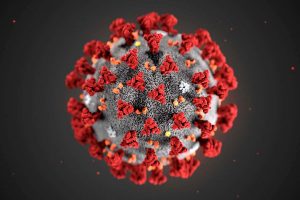I don’t like the militarization of terms to discuss foodborne or other bugs. The bugs are there, be cool, take steps to reduce risk.
 UNSW academics have released a 3D visualisation of soap destroying the coronavirus to remind Australians that simply washing your hands can help stem the pandemic.
UNSW academics have released a 3D visualisation of soap destroying the coronavirus to remind Australians that simply washing your hands can help stem the pandemic.
(There is nothing simple about handwashing when almost all public restrooms contain blow-dryers instead of paper towels and have controlled water flow rates that would dislodge nothing. It is the friction that helps reduce microbial loads on hands, which is why hospitals are over-flowing with paper towel dispensers.)
Soap counts too.
There’s too much self-aggrandizing in the PR piece, below, but it has pretty pictures.
This scientifically accurate simulation — a collaboration between UNSW Art & Design and UNSW Science — shows soap acting on contaminated skin covered with tiny coronavirus particles.
“With the threat of the second wave upon us, simple hygiene is something everyone can do to prevent the spread of the virus,” UNSW Science’s Professor Pall Thordarson said.
“Soap can destroy the virus on your skin.”
The simulation uses a cinematic approach and evocative animation to deliver a message that’s accessible to adults and children.
“One of the very few pieces of good news about this virus is that it’s actually very fragile — if you wash your hands with soap, the whole virus basically collapses like a house of cards,” Professor Thordarson said.
The simulation was created by UNSW’s 3D Visualisation Aesthetics Lab, which explores arts- and design-led visualisations of complex scientific and biomedical data. The Lab creates immersive platforms that play out scientific phenomena, such as drug interactions with cancerous cells or interactive personalised scans of strokes to help patients understand their treatment.
“3D visualisations make complex science comprehensible. The creative industries are in a unique position to be able to offer these kinds of innovative educational simulations,” said Associate Professor John McGhee who created the simulation with UNSW 3D Visualisation Aesthetics Lab post-doctoral researcher Dr Andrew Lilja.
